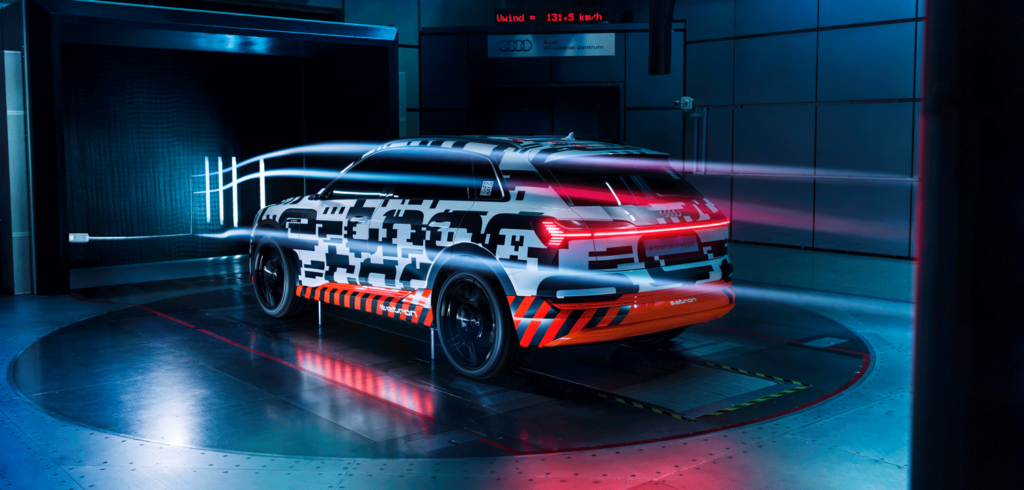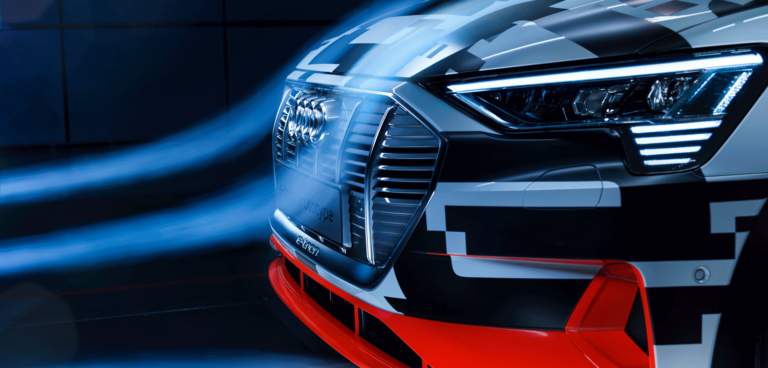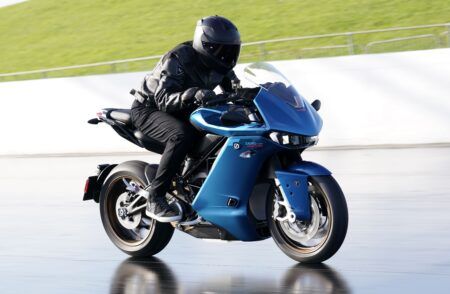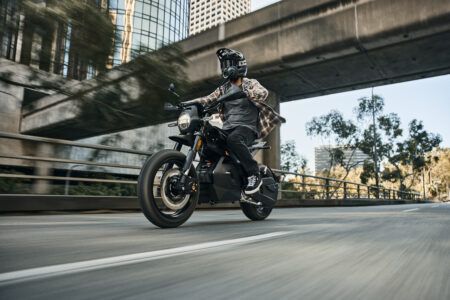Audi’s e-tron prototype has recorded more than 1,000 hours on the test rig at the OEM’s Wind Tunnel Centre in Ingolstadt, Germany, achieving a drag coefficient of 0.28. The aerodynamic performance of Audi’s ell-electric series production model plays a major role in the vehicle’s range of more than 248 miles on the WLTP cycle. On long journeys, vehicle drag constitutes the key driving resistance for the vehicle, while on shorter, urban trips, regenerative braking recovery of energy becomes even more vital.
To achieve the 0.28 figure, Audi engineers have introduced a number of aerodynamic measures. Audi states that the e-tron’s Cd is almost 0.07 less than for a comparable, conventionally powered vehicle – which equates to a range increase of around 21 miles per battery cycle, based on a typical usage profile.
The car’s optional virtual exterior mirrors mark the debut of the technology on a series production car. Narrower than standard mirrors, these reduce the vehicle width by 15cm, reducing drag and cutting wind noise.
 The e-tron’s standard adaptive suspension – a pneumatic suspension with adjustable damping – lowers the body by up to 26mm when the vehicle is traveling more than 74mph, lowering the drag and improving air flow.
The e-tron’s standard adaptive suspension – a pneumatic suspension with adjustable damping – lowers the body by up to 26mm when the vehicle is traveling more than 74mph, lowering the drag and improving air flow.
The front and rear areas are fully paneled, while an aluminum plate protects the high-voltage battery against damage from below. Bolting points feature bowl-shaped indentations, which make air flow better than a flat surface.
A controllable cool-air inlet, which features two electrically operated louvres, lowers drag. When shut, the air in this area of the vehicle experiences virtually no swirl. The top louvre opens first, followed by the second, when drivetrain components need cooling, or the air conditioning condenser requires ventilation. When the hydraulic wheel brakes are subject to high loads, the controllable cool-air inlet opens and releases two ducts, which channel cooling air into the front wheel arches to the brakes.
The e-tron’s side air inlets feature additional ducts to the wheel arches. These channel the air so that it flows past the outside of the 19in wheels.






